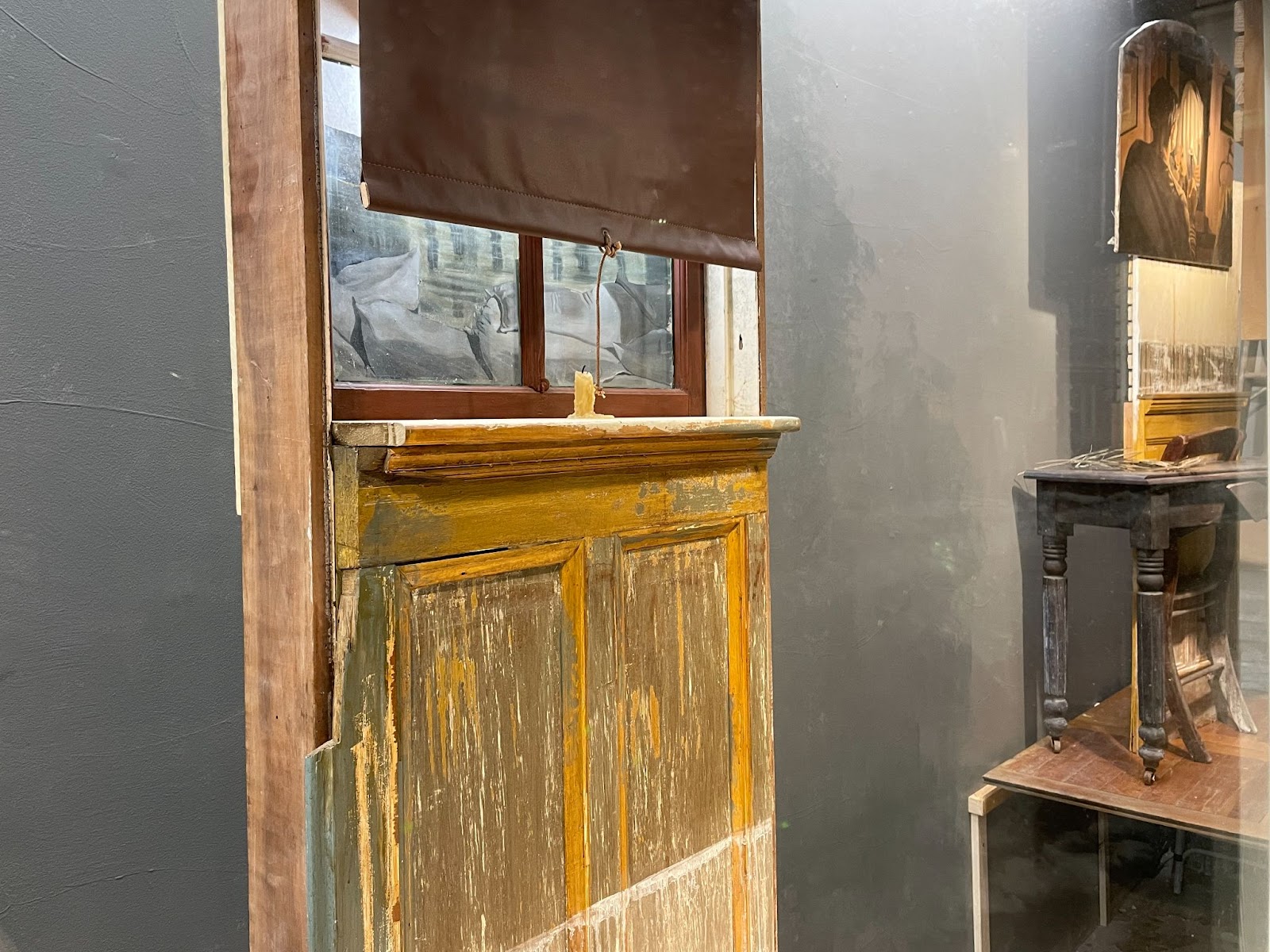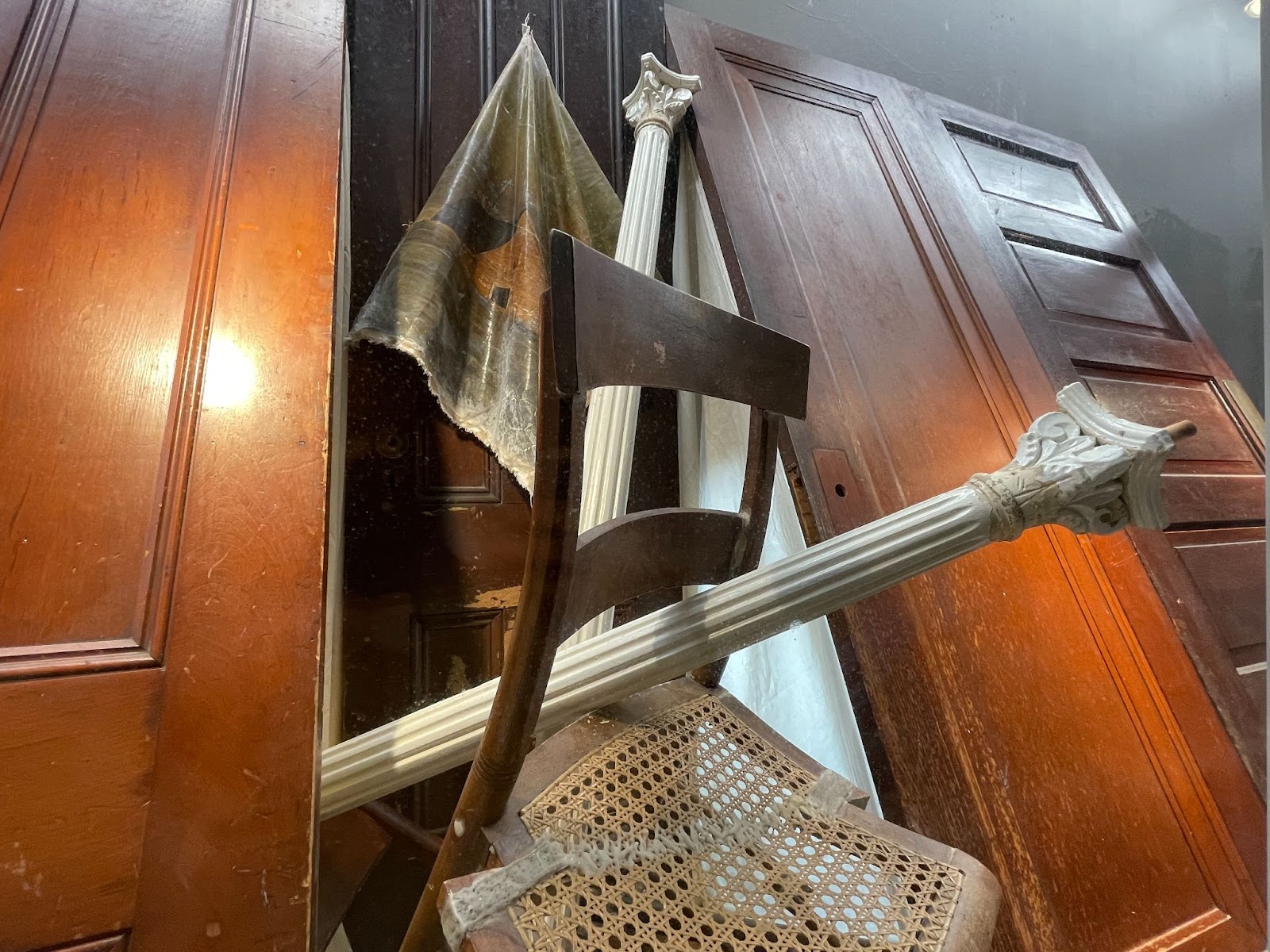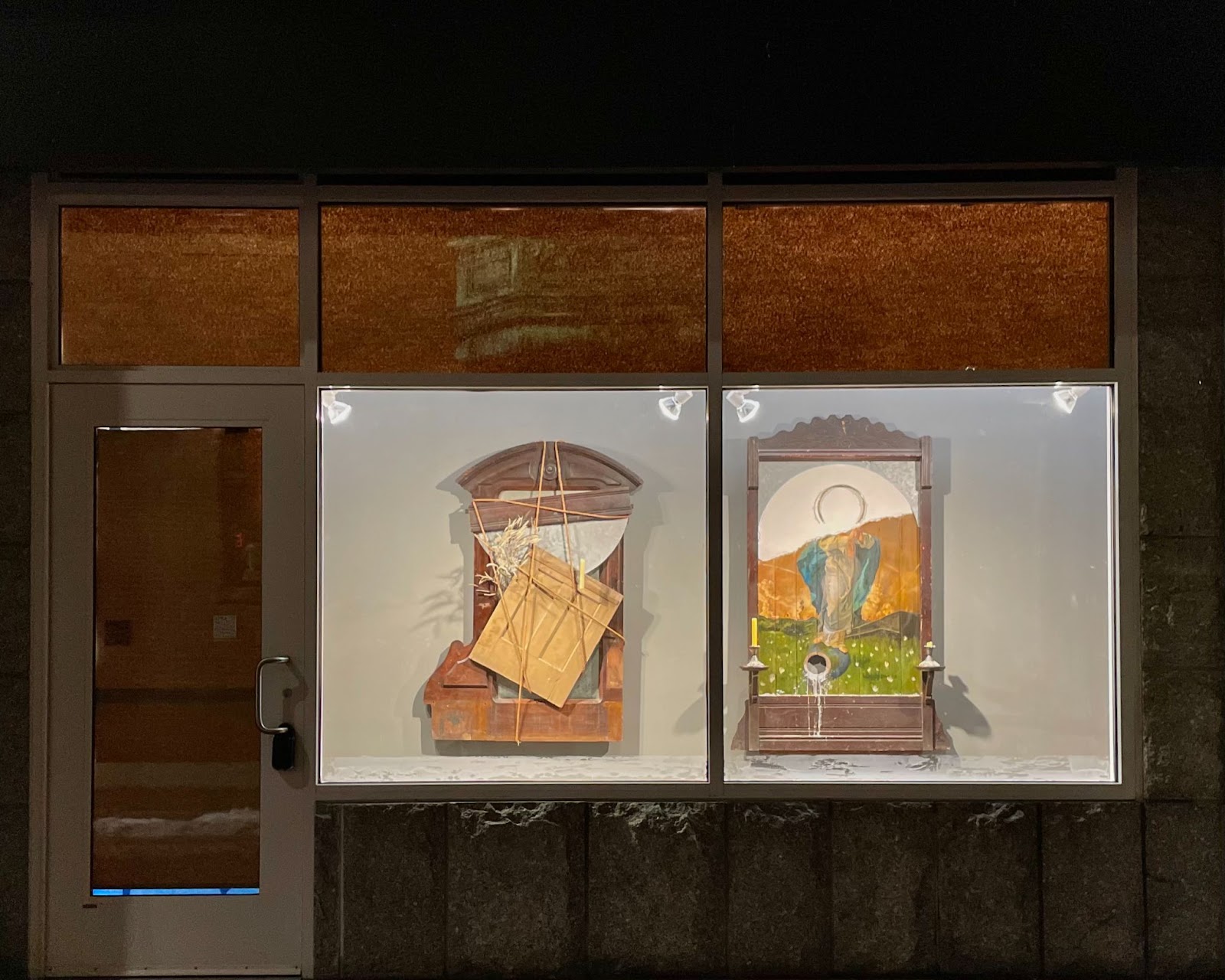The Harvard Square Business Association, in partnership with Intercontinental Management, is pleased to welcome Eben Haine’s solo exhibition “After Flood”, the latest installation at the 25/8 artspace project located at 2 Linden Street in Harvard Square.
Behind VA Shadows presents this show which is on view through April 10th. Curated by Yolanda He Yang, the exhibition brings forth a series of large-scale architectural collages and installations that combine elements of paintings, sculptures, and found objects. Reflecting on many pressing issues over the loss of homes, After Flood creates a dystopian, surrealist image; looking into the future, traces of destruction are tactically woven into scenes of domesticity, playing into the unsettling feelings of displacement. The exhibition urges viewers to contemplate and act upon the fragile yet essential relationships we hold with the spaces we reside in.

Denise Jillson, executive director of the Harvard Square Business Association, commented, “We are so thankful to Intercontinental Management for continuing to foster the arts in the public way. This popup gallery exhibits beautiful artwork that is to be enjoyed “from the street” in an unexpected location in Harvard Square.”
After Flood constructs a retrospective storyline, imagining an inspection happening from the future to now. Different scenes are threaded together by the increasing floodline visualized on the window. Beginning with disrupted, decorative frames signifying the imperial past, the exhibition moves forward to a series of slanting doors, centering a delicately balanced chair and fallen columns. Lastly, viewers are confronted with a realistic painting that employs a window pane as a frame, which accentuates a dynamic spatial relationship with furniture collapsing into an architectural space and painted window panels revealing receding scenery of the inside. Precarity is omnipresent; its existence is subtly masked by an illusionistic normalcy carefully staged by the artist. Through familiar interior objects and realistic representation, viewers are eased into the space; moments of oddity ensue: a crooked frame, a sutured chair, and an exposed structure. The disjointedness quietly encroaches, slowly eroding the familiar and the stable. Creating a conversation with the gallery space, After Flood further attempts at disguising itself through the masking of brown paper, evoking the image of a mundane, empty storefront common in the Boston urbanscape.

For Haines, space has always been an issue. The environmental risk stems from the consequence of human intervention; After Flood is a direct and almost prophetic response to the flooding risk of Boston, a city that was built primarily on landfill. However, the impact is disproportionate as most of the affordable housing projects were built in flood prone areas. Informed by these looming changes and the altering landscape, the exhibition expresses fear and anxiety in a controlled manner, disrupting elements that uphold constancy. As a recurring symbol in Haines’s works, the inclusion of candles in these surrealist scenes also alludes to the memento mori quality present throughout the exhibition.

Haines’s practice also comments on the limited spaces available that support experimentation in non-commercial art in the Boston art scene. At the time of the COVID-19 lockdown, Haines and Delaney Dameron founded Shelter In Place Gallery (SIP), a 1:12 scale exhibition space that runs on open calls. As part of the exhibition programming, Behind VA Shadows collaborates with SIP Gallery to host a series of virtual exhibitions and an in-person reception on March 15, 2024. An open call has been circulated for miniature art that responds to urgent social justice issues and the needs of our community, such as requesting seats for frontline staff working in exhibition spaces.

This special programming will kickstart Behind VA Shadows’ strategic plan for public programming in 2025. According to Yang, this year’s programming will focus on “how we bring people together–creating closeness in a time when structural alienation feels pervasive.” The programming design will build on the success of Tea Party, a public event that welcomed people to interact with the exhibited works with hot tea as part of Isola Murray’s solo exhibition Tired Clichés. While these parallel events will require physical presence and direct engagement from our community members, Behind VA Shadows is also seeking to enhance documentation through the assistance of photographer Wenbin Huang as a means to reach beyond the spatial constraints and begin to fill a gap in archiving our history.